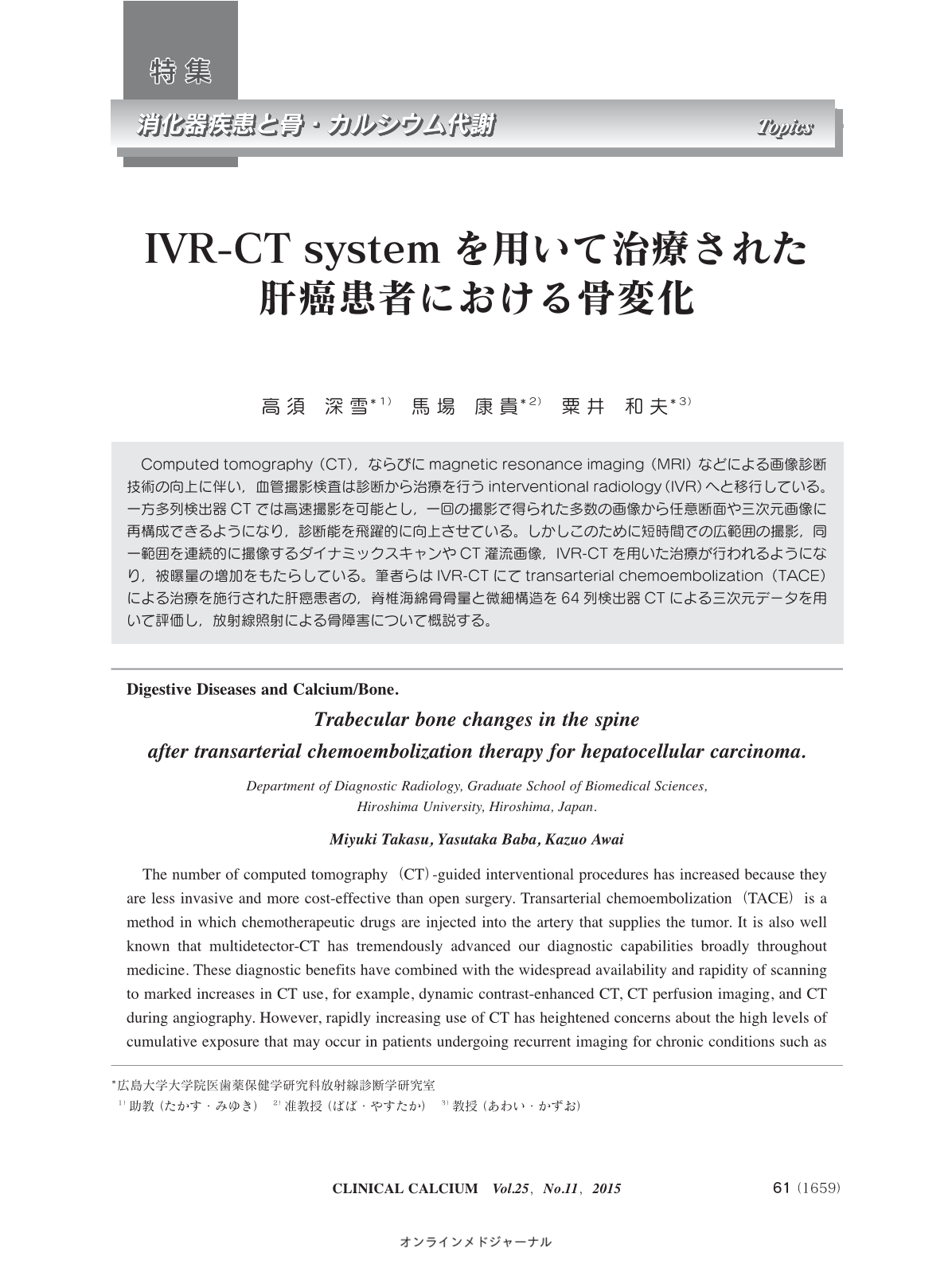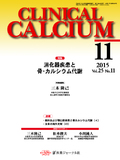Japanese
English
- 有料閲覧
- Abstract 文献概要
- 1ページ目 Look Inside
- 参考文献 Reference
Computed tomography(CT),ならびにmagnetic resonance imaging(MRI)などによる画像診断技術の向上に伴い,血管撮影検査は診断から治療を行うinterventional radiology(IVR)へと移行している。一方多列検出器CTでは高速撮影を可能とし,一回の撮影で得られた多数の画像から任意断面や三次元画像に再構成できるようになり,診断能を飛躍的に向上させている。しかしこのために短時間での広範囲の撮影,同一範囲を連続的に撮像するダイナミックスキャンやCT灌流画像,IVR-CTを用いた治療が行われるようになり,被曝量の増加をもたらしている。筆者らはIVR-CTにてtransarterial chemoembolization(TACE)による治療を施行された肝癌患者の,脊椎海綿骨骨量と微細構造を64列検出器CTによる三次元データを用いて評価し,放射線照射による骨障害について概説する。
The number of computed tomography(CT)-guided interventional procedures has increased because they are less invasive and more cost-effective than open surgery. Transarterial chemoembolization(TACE)is a method in which chemotherapeutic drugs are injected into the artery that supplies the tumor. It is also well known that multidetector-CT has tremendously advanced our diagnostic capabilities broadly throughout medicine. These diagnostic benefits have combined with the widespread availability and rapidity of scanning to marked increases in CT use, for example, dynamic contrast-enhanced CT, CT perfusion imaging, and CT during angiography. However, rapidly increasing use of CT has heightened concerns about the high levels of cumulative exposure that may occur in patients undergoing recurrent imaging for chronic conditions such as chronic hepatitis or hepatocellular carcinomas. So far, bone toxicity associated with CT has received little attention. The prevalence of osteoporosis and trabecular microstructural changes using clinical MDCT-based microstructural analysis in patients after TACE with the interventional-CT system to treat hepatocellular carcinoma have been demonstrated here.



